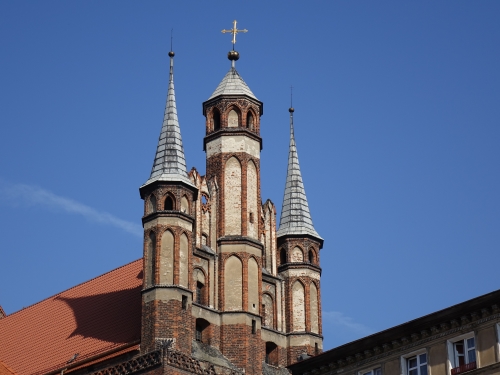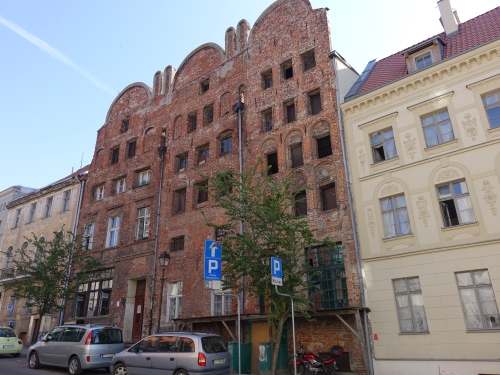Blog WHS Visits
WHS #660: Torun
The medieval city of Torun is a small, well-preserved trading town along the Vistula river. I really enjoyed my stay there, and have been thinking since what the attraction was. A major reason is that – despite its considerable size of 200,000 inhabitants – it lies too far off the beaten track for the weekend getaway and stag party crowd (which Gdansk and so many other cities in Central and Eastern Europe have to endure). It still is more a destination for Polish school trips than for foreign tourists.

Although it lies only 168km south of Gdansk, it takes significant time to get to Torun by public transport from there. The fastest trains take 2.5 hours, including a change half way. These are not too frequent however, plus it is wise to pre-book them as seats are reserved and do sell out. On the return trip I got stranded at Torun’s railway station because of a delay of 53(!) minutes, which also caused missing my connection. In the end it took me 5 hours to get back to Gdansk. So going only for a day trip from Gdansk is possible but it is a gamble. Fortunately I stayed for the night.
The WHS zone comprises 3 parts: the Old Town, the New Town, and the ruins of the Teutonic Castle. On my first evening I walked around the Old Town at ease. It does not have a real ‘medieval’ atmosphere, 80% of the buildings seem to date from the late 19th or 20th century. But the buildings of medieval origin that remain are all true masterpieces of the so-called 'brick gothic'. Red bricks alternate with stones of a different colour or plaster. And that’s a very pretty sight in the evening or morning light.

The next morning I further explored the city. First I went to the ruins of the Teutonic Order Castle. The Knights tried to conquer and convert the pagan Prussia from this strategic point. Torun at the time (13th century) was situated in the buffer zone between Poland and Prussia - if you look at the map now it's pretty deep in Poland, roughly in the middle of the country. The famous fort turned out to be a lot smaller than I had thought. There are only a few foundations left after the citizens expelled the Order in 1454 and burned down the fort.
West of the fort lies the 'New' Town. This is almost as old as the Old Town, it dates back to the 13th century as well and was built when more buildings were needed for artisans and industry. Both former towns have now grown together. Here in the New Town lies the most beautiful church, at least seen from the outside: the St. James Church. This too is made entirely of bricks. Restoration works are currently going on, so I could not get in. The same issue applied to the Copernicus House.

A final bit of trivia: I had Torun connected to the European Route of Brick Gothic. But when I checked the organization’s website in preparation for this trip, Torun was not (or not anymore) there as a member. This also applied to Riga and Vilnius. Only German and a few Danish and Polish cities are included now. Sometime after 2012, Sweden, Lithuania, Latvia and Estonia seem to have left this network.
Els - 19 May 2018